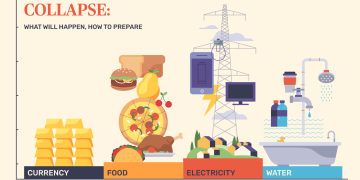As global trade continues to fragment under the strain of geopolitical tensions, technological realignments, and the aftershocks of the pandemic, regional trade agreements (RTAs) have emerged as a powerful force in redefining the contours of international commerce. Once primarily vehicles for tariff reduction, today’s RTAs are evolving into comprehensive frameworks that govern supply chain security, digital trade rules, labor standards, green policies, and cross-border investment norms.
This new generation of trade agreements — including the Regional Comprehensive Economic Partnership (RCEP), the Comprehensive and Progressive Agreement for Trans-Pacific Partnership (CPTPP), the African Continental Free Trade Area (AfCFTA), and initiatives like the Indo-Pacific Economic Framework (IPEF) — are doing far more than shaping tariff regimes. They are actively redrawing global supply chain maps, redistributing production nodes, and influencing where capital and capacity will flow over the coming decades.
The central question now is: How are these upgraded regional trade pacts reshaping global supply chains — and what does it mean for businesses, governments, and investors?
I. From Tariffs to Rules: The Expanding Scope of Modern Trade Agreements
Traditional trade agreements largely focused on reducing tariffs and easing quota limits. In contrast, today’s RTAs operate as complex systems of governance. They reflect political alliances, regulatory convergence, industrial policy agendas, and long-term security strategies.
Key structural upgrades in modern RTAs include:
1. Embedded Supply Chain Cooperation Mechanisms
For example, RCEP includes dedicated clauses to promote regional supply chain integration through joint infrastructure development, mutual recognition of standards, and enhanced customs coordination. This encourages the development of regional manufacturing ecosystems with internal resilience.
2. Digital Trade & Cross-Border Data Governance
New provisions governing digital commerce are becoming standard in RTAs. These rules define how data can be transferred across borders, regulate e-signatures, ensure cybersecurity compliance, and establish norms for digital taxation. The result is a clearer path for cloud infrastructure, fintech platforms, and e-commerce operators to scale internationally.
3. ESG, Labor & Green Transition Clauses
Agreements like the CPTPP and USMCA integrate binding clauses on environmental protections, labor rights, and carbon accounting standards. These introduce a new class of non-tariff barriers that prioritize compliance and sustainability over price efficiency.
This evolution signifies a shift: Supply chain participation is no longer just about cost — it’s about alignment with rules.
II. Three Megatrends Shaping Supply Chain Realignment
1. Regionalization Over Globalization
While globalization remains relevant, the momentum is shifting toward regional blocs. Upgraded RTAs encourage countries to source, produce, and consume within a single economic zone. The implications are profound:
- Southeast Asia is emerging as a regional production base for East Asian tech giants, thanks to RCEP.
- The EU’s internal market is reinforcing “made in Europe” supply chains with common ESG standards.
- North America, under the USMCA, is re-establishing itself as a high-efficiency, politically aligned production corridor spanning the U.S., Mexico, and Canada.
The new regionalism favors shorter, faster, and more resilient supply chains, often called “nearshoring” or “ally-shoring.”
2. Trust-Based Supply Chain Networks
The era of assuming global neutrality is over. Strategic trust is now a core input in supply chain decisions. RTAs increasingly reflect geopolitical fault lines, with partner countries selected based on strategic alignment rather than purely economic metrics.
- The U.S. and its allies are promoting “friend-shoring” of sensitive technologies (e.g. semiconductors, critical minerals).
- The EU’s digital partnerships with Japan and South Korea center on trusted data governance.
- India’s participation in selective trade frameworks signals its intent to offer an alternative to China-centric production.
This shift leads to semi-closed supply ecosystems, often excluding less-aligned economies and redirecting investment flows based on political compatibility.
3. Low Carbon, High Compliance Hubs as the New Benchmark
As RTAs increasingly require green compliance, low-emissions production becomes a new form of competitiveness. It’s not enough to be cheap — economies must now also be clean and rule-abiding.
- Countries with renewable energy capacity, ESG disclosure norms, and carbon accounting infrastructure will attract more supply chain nodes.
- The EU’s Carbon Border Adjustment Mechanism (CBAM) and similar environmental tariffs will pressure exporters to comply or be excluded.
- Green clauses in RTAs are raising the compliance bar for participation, especially in industries like steel, aluminum, cement, and chemicals.
This marks a paradigm shift: the new “supply chain hubs” will be judged on carbon footprint and social responsibility, not just output capacity.
III. Sectors Most Impacted by Trade Agreement-Driven Realignments
1. Electronics and Semiconductors
This sector is ground zero for strategic realignment. RTAs often include IP protection, investment screening, and export control alignment for semiconductors and advanced electronics. The outcomes include:
- A push to diversify chip supply chains into Southeast Asia, India, and the U.S.
- Expanded access to regional electronics hubs via RCEP, CPTPP, and IPEF-aligned frameworks
- Reconfiguration of component-sourcing and packaging operations based on dual-use tech concerns
2. Green Technology and Renewable Energy
Modern RTAs incentivize cross-border collaboration in clean energy, battery production, and electric vehicles (EVs). Key features include:
- Zero tariffs for solar panels, lithium batteries, and wind turbines
- Shared R&D provisions for green innovation
- ESG-linked subsidies that are conditional on domestic sourcing or partner origin compliance
Expect an acceleration of green tech supply chains within aligned blocs, especially in regions like the EU, North America, and East Asia.
3. Agri-Food and Processed Commodities
Lower tariffs and standardized sanitary rules benefit food exports, while traceability and carbon metrics reshape where food is grown and processed.
- RTAs with climate-resilient agriculture support favor countries adopting smart farming
- Rules-of-origin changes enable multi-country processing within blocs without losing preferential treatment
Expect a shift toward regionalized food production chains, especially in Africa and Asia.
4. Pharmaceuticals and Biotech
Increased IP protections, regulatory harmonization, and medical standards alignment embedded in RTAs boost cross-border pharma trade.
- Biotech firms can enter new markets faster under harmonized approval regimes
- Manufacturing APIs (active pharmaceutical ingredients) within RTA blocs can ensure supply chain security
This will foster the emergence of regional biopharma ecosystems, especially across South and Southeast Asia.

IV. Strategic Implications for Corporations and Investors
1. Rethink Global Footprint Based on Agreement Geography
Businesses must map their operational exposure to current and pending RTAs, identifying jurisdictions where preferential trade rules apply. Plant location, logistics hubs, and supplier relationships should be optimized for tariff, compliance, and subsidy eligibility under new frameworks.
2. Build “Compliance-Ready” Supply Chains
ESG and regulatory clauses in RTAs are no longer optional. Companies that can demonstrate traceable, low-carbon, ethically sourced supply chains will have a competitive edge — both in market access and reputation.
3. Move Early on “Small Deals with Big Rules”
Not all agreements are large in GDP terms, but many are regulatory trailblazers. Examples include digital trade frameworks like DEPA or targeted accords in data privacy or AI governance. First movers in these ecosystems can set standards, shape narratives, and access markets with less competition.
Conclusion: The Rules Are the New Geography
In the 20th century, supply chains were organized around efficiency, labor arbitrage, and just-in-time logistics. In the 21st century, they are increasingly organized around rules, alliances, and resilience.
Upgraded regional trade agreements are not just about economics — they are instruments of strategic realignment, capable of creating new winners and losers across global industries. The supply chain of the future will not merely follow cost curves or shipping routes. It will follow compliance frameworks, political alignments, and climate obligations.
In this new era, the advantage goes to those who read the rules first, adapt fast, and position early. For governments, this means designing agreements with execution in mind. For businesses and investors, it means using trade policy as a strategic compass — not just background noise.
Because in the emerging supply chain order, regulatory alignment is the new route to competitiveness.





























